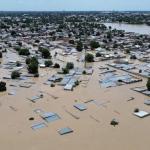Malnutrition and Its Danger to Education
By Saheed Sunday
Malnutrition is often only viewed through the lenses of someone not eating at all (like anorexia) or of someone eating less, but in truth, it does go beyond this. It is said that the body needs a whole lot of nutrients to thrive by maintaining its tissues, and when the body doesn’t get these nutrients the way it needs, malnutrition sets in. However, it is crucial to say that you can feed yourself regularly and still be malnourished. This usually comes from the fact that some specific nutrients are abundant in you while you lack the others. Spoiler alert though, too much nutrients can also lead to problems. Usually, the common effects of malnutrition include blindness from Vitamin A deficiency, soft bones from Vitamin D deficiency, and stunted growth from protein-energy undernutrition. Other effects include insulin resistance and carotid artery disease. Hence, having briefly discussed malnutrition and its effects, what are its dangers to education?
For the development of the brain, it is said that nutrients are needed in their right proportions, ranging from the right balance of proteins, fats, carbohydrates, vitamins, and minerals to water. Studies also showed that micronutrients including iron, zinc, choline, iodine, folate, B12, and healthy fats are also cognizant of the development of cognition to learning. This insinuates that a student who is malnourished is faced with the issue of delayed brain development and slow cognitive thinking.
Similarly, the World Food Program, USA stated that “it takes a lot of energy to think. In fact, around 20% of our daily calories are used as fuel for our brains.” This right here can be discussed with a simple logic lodged in a question. For someone whose body is down to 20% due to malnutrition, what fuel would the brain work on to actively learn something new and be effective? If the brain is casually fueled by calories, it means there is even more fuel burned by it during an extensive aptitude. A student who is malnourished will therefore face an issue with learning due to this.
Also, one of the effects of malnutrition as discussed in the first paragraph is blindness from Vitamin A deficiency. It is no good news to say that students will face issues with trying to properly see what is being displayed on slides or written on the board while with a bad sight. Consequently, this takes a toll on effective learning on their side and slows down their learning pace.
As a form of solution to prevent malnutrition, therefore, students are advised to eat a well-balanced diet with a variety of nutritious foods in it. This will bring the essential nutrients needed by the body for growth to the right proportions. As a result, students’ brains get enough to feed from and their cognition and intellectual capacity get levelled up to their proper capacities.





